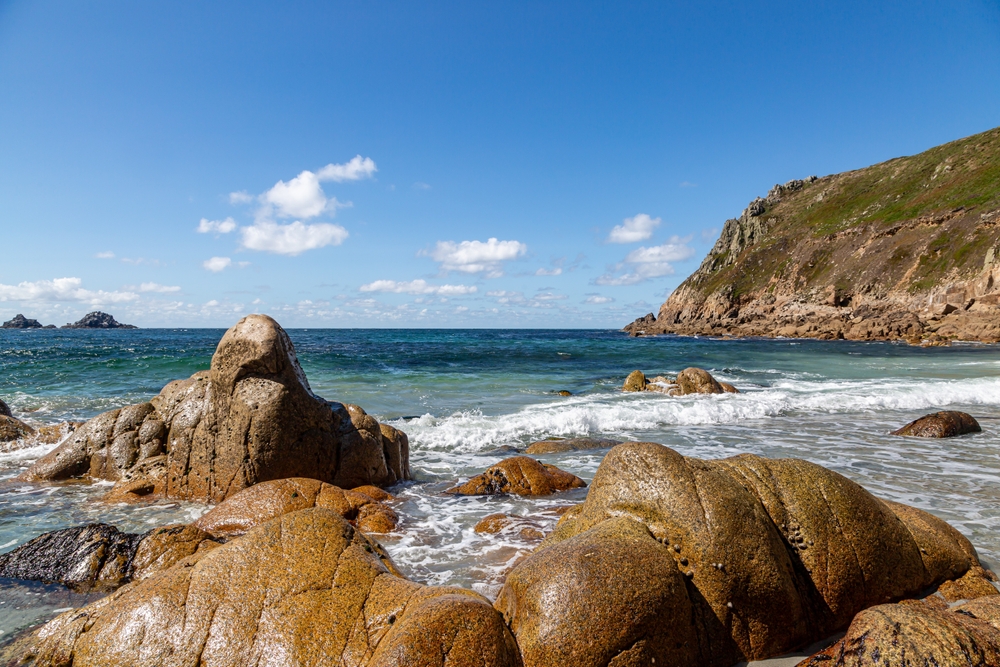Peaceful Porth Nanven has been featured as one of the finest beaches in UK but surprisingly this unusual beach is often missed by visitors to Penwith. Known locally as the ‘Dinosaur Egg Beach’ it is well worth seeking out because the whole cove is filled with rounded granite boulders – beautifully smooth ovoid stones of all shapes and sizes that look very much like giant eggs!
Porth Nanven
Porth Nanven beach lies in the far west of Cornwall, close to the town of St Just in Penwith. Sometimes also known as Penanwell this rocky cove can be found at the end of the secluded Cot valley, with its warm micro-climate and lush semi-tropical plants.
The area was an important part of the mining landscape in the 19th century and the remains of that industry can still be seen blended now with the verdant nature that surrounds it. In the past there was a look-out above the cove for huers to watch for pilchards, today Cornish choughs and seals are regular visitors.
Site of special scientific interest
Porth Nanven may be something of a picturesque haven, tucked away from the bustle and worries of modern life but it is also a designated Site of Special Scientific Interest – and it is all to do with those eggs!
Most visitors assume that the rounded stones are simply an impressive result of the relentless power of the sea, pounding and shaping the granite over many years. And while this is true it is not the whole story, because these rotund boulders were actually shaped by the waves some 120,000 years ago!
Ice age
The cliffs above Porth Nanven hide what is known as a ”suspended” or “raised beach”, a beach that was formed between the Ice Ages when the melting ice meant that sea levels were much, much higher than they are today. Looking at the cliff face it is easy to spot the layer of boulders which define that prehistoric beach level. And it is these rocks, rounded by the sea thousands of years ago, that are gradually eroding out of the ancient deposit of sand and falling onto the modern-day beach below.
Other remnants of that prehistoric past were believed to have been revealed by the tin stream workings back in the 19th century when horns and what was believed to be deer bones were uncovered some 30ft (9m) beneath the modern land surface.
So,for many a trip to Porth Nanven beach is like the most magical geology and archaeology lesson! A way to see the ancient past with your own eyes!
The National Trust now cares for the beach, which has created a great deal of interest in recent years. Should you visit it is important to remember that no matter how tempting it is to take home a ‘dinosaur egg’ these rocks are actually protected by law. Carrying away the stones is now illegal.
